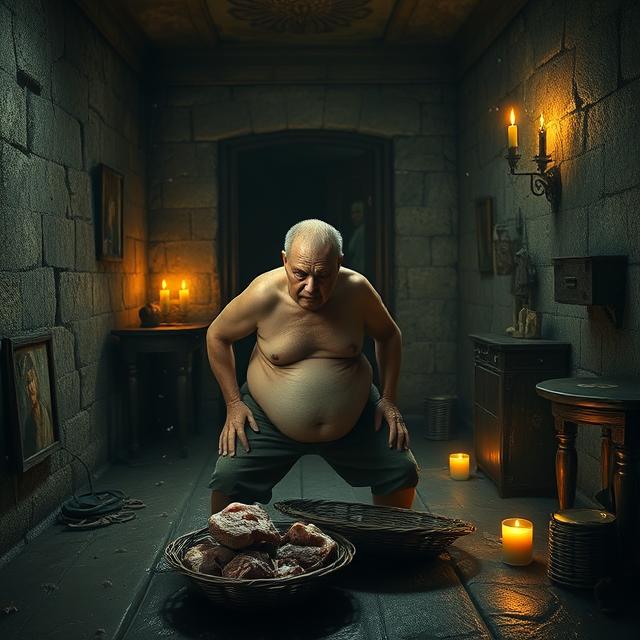In the annals of American crime, few names conjure as much macabre fascination as H.H. Holmes. He is often called America’s first serial killer, a monstrous figure who, as legend has it, built a labyrinthine “Murder Castle” in the heart of Gilded Age Chicago. The stories, fueled by the sensationalism of the era’s yellow press, paint a portrait of a diabolical genius who lured unsuspecting visitors from the 1893 World’s Columbian Exposition into a hotel of horrors, complete with gas chambers, soundproof vaults, and secret chutes leading to a body-disposal basement.
But behind the towering myth of the “Torture Doctor” lies a more complex, though no less chilling, reality. Herman Webster Mudgett, the man who called himself Henry Howard Holmes, was undeniably a cold-blooded killer and a prolific con artist. His true story, however, is a tale less of a fantastical murder factory and more of a cunning, charismatic predator who exploited the chaos and ambition of a rapidly changing America. Separating the man from the myth reveals a different, but equally terrifying, kind of monster.
The Making of a Swindler
Born in 1861 in New Hampshire, Herman Webster Mudgett was by all accounts a bright and precocious child. He expressed an early interest in medicine, which allegedly led to him performing crude, experimental surgeries on animals. He graduated from the University of Michigan’s Department of Medicine and Surgery in 1884, but his true talents lay not in healing, but in deception.
Even during his school years, Holmes was engaged in numerous criminal schemes. He stole cadavers, which he would use to defraud life insurance companies by planting them as victims of fictitious accidents. He was a master of the con, a chameleon who could effortlessly adopt new identities and charm his way into the trust and fortunes of others.
In 1886, he arrived in Chicago, a booming, chaotic metropolis preparing for the grand spectacle of the 1893 World’s Fair. He took the name Dr. Henry Howard Holmes and quickly found work at a pharmacy in the Englewood neighborhood. It wasn’t long before the original owner, Mrs. E.S. Holton, mysteriously vanished, leaving Holmes in possession of the business. This would become his grim pattern: insinuate himself into the lives and businesses of others, particularly women, swindle them of their assets, and then, when they were no longer useful, make them disappear.
The Myth and Reality of the “Murder Castle”
It was across the street from the pharmacy that Holmes began construction on the building that would secure his infamous legacy. The three-story structure, which he claimed would be a hotel for visitors to the World’s Fair, became known to the press as the “Murder Castle.”
The mythology surrounding the building is the stuff of nightmares. Newspapers at the time published lurid, and largely fictional, accounts of its interior. They described a maze of over 100 rooms, with staircases leading to nowhere, doors that opened onto brick walls, soundproofed chambers, and gas pipes that allowed Holmes to asphyxiate his guests at will. The legends told of trapdoors in the floors where victims would be dropped into a sinister basement equipped with acid vats, a crematorium, and medieval-style torture racks.
The reality, as meticulously researched by historians like Adam Selzer, was less fantastical but still deeply unsettling. The building was not a hotel in the modern sense and likely never opened to the public for lodging. The first floor housed legitimate storefronts, while the upper floors contained apartments and office spaces. Holmes did constantly hire and fire construction crews, not to keep the building’s layout a secret, but simply to avoid paying them.
The building did contain oddities, such as a large, walk-in bank vault and hidden rooms or closets. However, these were likely used by Holmes to hide stolen furniture and equipment he bought on credit rather than for imprisoning victims. The infamous chutes were little more than laundry chutes common in buildings of the era. The true horror of the “Castle” was not its architecture, but the man who owned it and the very real crimes he committed within its walls and beyond. There is no credible evidence that Holmes murdered tourists during the World’s Fair. His victims were people who knew him, people who had made the fatal mistake of trusting him.
The Pitezel Murders and the Detective’s Hunt
While the number of Holmes’s victims is debated, with his own unreliable confession claiming 27, his most notorious and well-documented crimes were centered on his business associate, Benjamin Pitezel, and his family. The plan was a classic Holmes insurance scam: Pitezel would fake his own death, and his wife would collect the $10,000 life insurance policy, which they would then split.
However, Holmes had no intention of splitting the money. In 1894, in Philadelphia, he murdered the real Benjamin Pitezel, likely with chloroform and benzene, and passed his body off as the victim of a lab explosion. He then embarked on a horrifying, cross-country journey, manipulating the grieving and unsuspecting Mrs. Pitezel. He convinced her that her husband was in hiding and that she should allow him to take three of her five children—Alice, Nellie, and Howard—into his care.
What followed was a masterful chase led by Philadelphia detective Frank Geyer. Painstakingly retracing Holmes’s steps across the Midwest and into Canada, Geyer uncovered the grim truth. He found the bodies of the two Pitezel girls, Alice and Nellie, buried in the cellar of a rented house in Toronto. Later, in Indianapolis, he found the charred remains of young Howard Pitezel, who had been killed and burned in a stove.
Capture, Trial, and a Twisted Legacy
With Geyer’s discoveries making headlines across the nation, Holmes was finally apprehended in Boston in November 1894. He was put on trial in Philadelphia, not for the dozens of murders he was suspected of in Chicago, but for the one they could prove: the murder of Benjamin Pitezel. Acting largely as his own lawyer, the ever-arrogant Holmes presented a defense, but the evidence against him was overwhelming. He was convicted and sentenced to death.
While awaiting execution, Holmes, ever the opportunist, was paid by the Hearst newspapers to write a confession. In it, he admitted to 27 murders, though many of the people he named were later found to be alive. He gave various contradictory accounts of his life, at times claiming innocence, at others claiming he was possessed by Satan. He famously said, “I was born with the devil in me,” a line that perfectly captured his public persona but was likely just another one of his manipulations.
On May 7, 1896, H.H. Holmes was executed by hanging at Moyamensing Prison in Philadelphia. His neck did not snap immediately, and he reportedly struggled for more than 15 minutes before being pronounced dead. His final request was that his coffin be encased in cement and buried in an unmarked, 10-foot-deep grave, fearing that grave robbers would steal his body for dissection—a final, ironic twist for a man who had profited from that very practice.
The legend of H.H. Holmes has endured for over a century, a chilling tale of Gilded Age horror. While the myth of the Murder Castle may be more fiction than fact, the truth of the man behind it is no less terrifying. He was a predator who used his intelligence, charm, and the anonymity of a bustling city to commit unspeakable acts, not in a fantastical torture dungeon, but in the quiet, ordinary spaces of apartments and rented homes. He remains a testament to the dark possibilities that can hide behind a disarmingly normal face.
Want to explore the shadows even deeper? For more chilling cases like this, visit SinisterArchive.com, where the legends are real.




